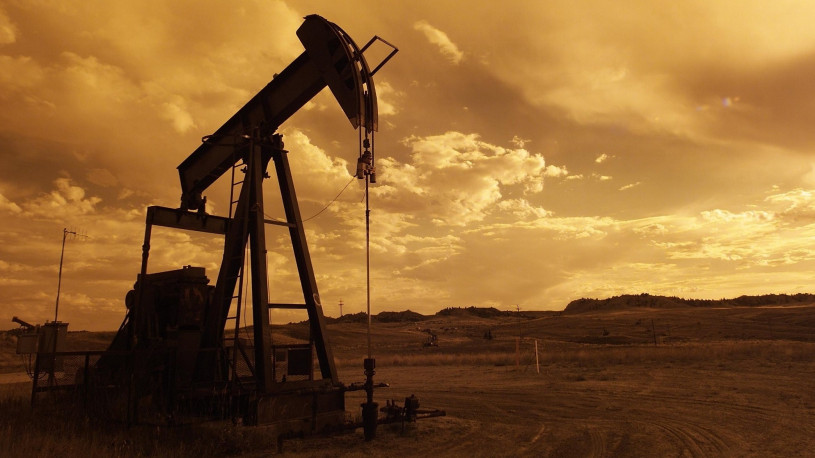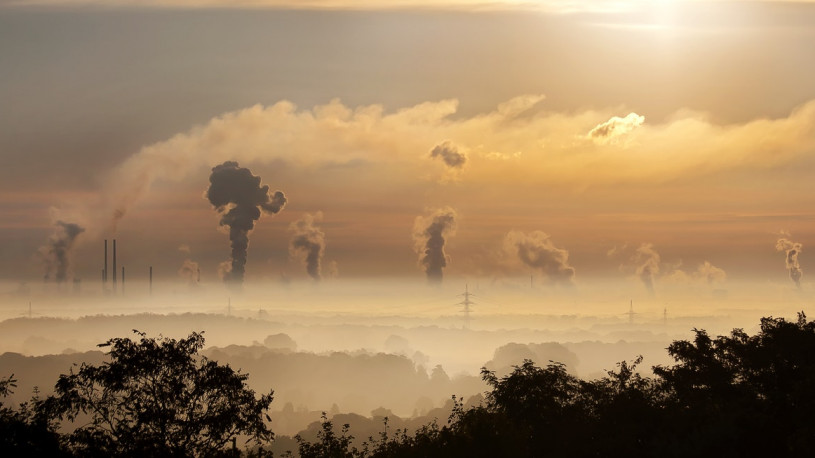-
An Uncertain Outlook for Oil Derivatives
 Continue Reading
Continue ReadingDespite optimistic forecasts for growth in the EU chemical industry, there is considerable concern for the short-term prospects for the oil industry and its impact on the entire chemical industry. The situation can be illustrated by a closer look at just one area of oil processing – benzene.
As benzene is one of the key raw materials for further processing, its price is carefully monitored. Since the beginning of the year, due to an expected overall market recovery, there was increased interest in buying benzene. Yet the price has not risen, due in part to falling oil prices and a glut in pyrolysis gasoline. Further pressure was put on the price of benzine as limited export opportunities and stagnating demand resulted in a fall in its value.
While it was assumed that the price of benzene in early March could be as high as $640/mt CIF NWE, this is not as low as many would like, as deals were made last March for as little as $590/mt FOB NWE.
This development has had a big impact on producer margins, reducing them drastically, which in turn reduces production capacity as investors leave. This downward trend will continue until the oil industry recovers. There is the possibility of benzene exports to North America, where the market has already recovered, so a break in current price trends could occur in the second half of March. Although this in turn is provided that the increased export of benzene in the US Gulf does not pull prices below $2/gal.
With so many factors to be considered, traders are still uncertain as to which direction prices will go, an uncertainty that will likely cause further problems for the EU chemicals market.
Your team Spotchemi
-
Does the European Emissions Trading System Harm the Chemical Industry’s Future?
 Continue Reading
Continue ReadingLaunched in 2005, the European Emission Trading Scheme (ETS) was established to limit how much carbon the region produced through industry and transport. It hoped to save the planet from disastrous climate change, but some experts predict that it will simply damage the European economy.
Founding the system
The system was based on the US ‘cap and trade scheme’, a product of the Clean Air Act of 1990. Simply put, the system limits the amount of carbon the region can create. Companies that produced a lot of carbon emissions would need to buy a government issued permit allowing them to pollute the air. This would provide an incentive for making your business more environmentally-friendly, as there would be a downside to not being green.
As Steve Richey, a self-proclaimed sustainability expert explains, “Companies which can reduce their emissions at a low cost will do so, and sell the emissions credits to companies who cannot. This is the ‘trade’ aspect of the program. The ‘cap’ part reflects the fact that there is some given level of emissions which is a maximum.”
A fine idea, but the practice hit problems, as the original limits in the European system were set too low, causing the price of carbon permits to drop to as low as $2.50 a tonne. At such a low level, it was never worth a company changing their business to avoid buying more permits.
Changing the system
To remedy this, on February 24th 2015, the European Committee on the Environment, Public Health and Food Safety (ENVI) decided to reform the scheme. By a majority of 58 to 10, they voted in favour of removing 900 million tonnes of emissions allowances from the system (until a later date), as well as limiting the issue of future permits as soon as 2018 (a date brought forward from the original 2021).
As Ivo Belet, MEP and the man who is guiding the law changes through parliament says, “This vote sends a strong signal that Parliament is serious about fighting climate change … (and) will ensure that CO2 prices spur investments in greater energy efficiency.”
What does this mean for the European chemicals industry?
According to Germany’s chemical industry trade group VCI the decision will have a negative impact on the industry. VCI general manager Utz Tillmann believes that “contrary to what one might think (the changes to the system) will make the market for emissions certificates in Europe unpredictable and could lead to higher costs for energy-intensive industries” such as chemicals.
Klaus Windhagen, general manager of a German paper industry trade group, said that the changes may accelerate firms’ tendency to invest outside the EU “because of the lack of reliability of the European energy and climate policy.”
The European Chemical Industry Council (Cefic) agrees, calling the vote “another blow” to the chemicals industry. “Anything that ups our costs relative to global competitors is another blow that we cannot afford,” said Cefic director general Hubert Mandery.
To some extent Brussels has acknowledged the damage that restrictions on carbon emissions will have on European industries. Politicians realise that firms may begin to invest in regions without carbon limits to avoid paying for permits (so called ‘carbon leakage’), and so have promised protection for the ‘most efficient energy-intensive installations’. A move welcomed by Mandery as “an important measure that helps Europe’s real economy remain competitive”.
But as a warning, he adds, “We want to stay in Europe. We want to grow in Europe. But for that we will need more than carbon leakage protection beyond 2020.”
So if it creates a lack of competitiveness, why have ETS?
As Steve Richey explains, “the major benefit of a cap and trade system is that it is inherently efficient at limiting carbon emissions.” And carbon emissions are already changing our planet.
As Satoshi Kambayashi of the Economist magazine makes clear, “Carbon does harm globally. There is a logic to having a global price for it.”
This is a line of thinking supported by those in power. At a recent industry panel in Singapore, Matthew Baldwin from the directorate-general for mobility and transport, part of the European Commission, stated that, “There was a universal sense within Europe, but I hope not just in Europe, that we have a real problem we’re trying to solve in climate change.”
Like many politicians, he sees ETS as the solution, but what long term effect it will have on the European chemicals economy is unknown. As mentioned earlier in this article, other regions do have similar schemes. The Western Climate Initiative on the Pacific coast of North America and the New Zealand Emissions Trading Scheme, set up in 2009, both run a ‘cap and trade’ system, whilst Japan, China and South Korea all have legislation or proposals to introduce systems in the coming years.
Can ETS go global?
Yet the problem remains that whilst the price of carbon permits are set by market forces, the amount of carbon allowed is based on the decisions of regional politicians. They decide how many permits to issue each year, and so will be under pressure to issue more to aid the economy in the area.
Unilateral action by the EU, will affect productivity, either pushing firms to leave to not-so-greener pastures or driving them to bankruptcy. At present, Brussels seems to believe that the advantages of restricting climate change outweigh the disadvantages of restricting carbon emissions. So the key question is; will it work, if the system isn’t global?
As Chris de Lavigne, a renewable energy specialist at industry consultants Frost and Sullivan says, “Anything to do with carbon on a global basis has proven to be difficult, (when what is needed is) to get the four corners of the world to agree on one system.”
Whether that will happen in time to save the European chemicals industry or to save the planet remains to be seen.
-
How Can the Chemicals Industry Save the World?
 Continue Reading
Continue ReadingIt doesn’t seem like a big problem now. In fact, it didn’t seem like a big problem then, but way back in the 1980s, Richard Wilkey was looking for a new type of coating. One that would extend the life of the lawnmower blades of his Wisconsin based firm, Fisher Barton.
To do this he teamed up with Frank Worzala, then a professor of metallurgical and mineral engineering, and Worzala’s master’s student, Bill Lenling. Together they developed a process called Thermal Spray coating in which particles of a material are sprayed onto a surface at such a high velocity that the particles essentially melt and spread evenly across the surface.
This new coating dramatically improved the wear, oxidation and corrosion resistance; electrical conduction/insulation and biocompatibility of products in such industries as aerospace, electronics, food processing, biomedical and energy. In fact the project was so successful that it is now managed as Thermal Spray Technologies, with Lenling as its president.
This may not seem like a major scientific breakthrough or a great help to society, even if the processing plant does provide jobs for 145 people. But what it does show is the importance of an idea and the commitment to back it up with time and money.
Today, the world has greater worries than the durability of lawnmower blades. With a population expected to reach 12.6 billion people by the end of the century, the planet is short of resources, and when it comes to precious metals, the world is desperate for them all. That is what makes them so precious.
The platinum problem.
Just a few hundred tonnes of platinum are mined each year from naturally occurring sources, the rest is produced from a dirty by-product of nickel and copper processing, mostly from Africa.
It has good resistance to corrosion even at high temperatures, yet allows the transmission of an electric current, so it is often used in products such as pacemakers, solar cells and electrodes, as well as drugs, oxygen sensors and spark plugs.
As a valuable catalyst, around half of the world’s annual platinum production is used to control vehicle emissions in catalytic converters.
Demand for platinum is so high, that during the economic meltdown in 2008, its value rose to nearly US$70. Current values are a more reasonable US$41 per gram, but still high enough to be a burden to us all.
The platinum solution.
Researchers at the University of Alabama have developed a new electrode material called NanoCOT, which they claim has many of the same electrical properties as platinum, and yet costs half the price to make from a much cleaner process.
The secret to NanoCOT’s low price is that it is made up plentiful elements of carbon, oxygen and titanium, while the new material’s nanostructure allows for customisation and increased surface area.
Whilst this new product is still trying to find its feet in a commercial world, it does show the near-limitless possibilities that chemical engineering can provide.
You can’t afford gold plated bath taps today, but your children may have NanoCOT platinum plated ones tomorrow.
Sustainability and Progress.
This is a perfect example of chemical engineers responding to the challenges of resource depletion. Thirty years ago, a small piece of research helped to solve problems in getting the grass cut. In 2015, in Alabama they may have found a replacement for platinum. What links these two developments is the desire for progress and sustainability.
The world is able to have both, but only by embracing a new way of thinking. The commercial world is too often short-sighted, wanting a quick return on investment, despite the fact that the profit on well demonstrated products and process technologies based on good science are outstanding. The commercial world needs to wake up to what the chemical industry has to offer, how it can generate wealth and at the same time save the world.
So how can the chemical industry save the world? – Research.
